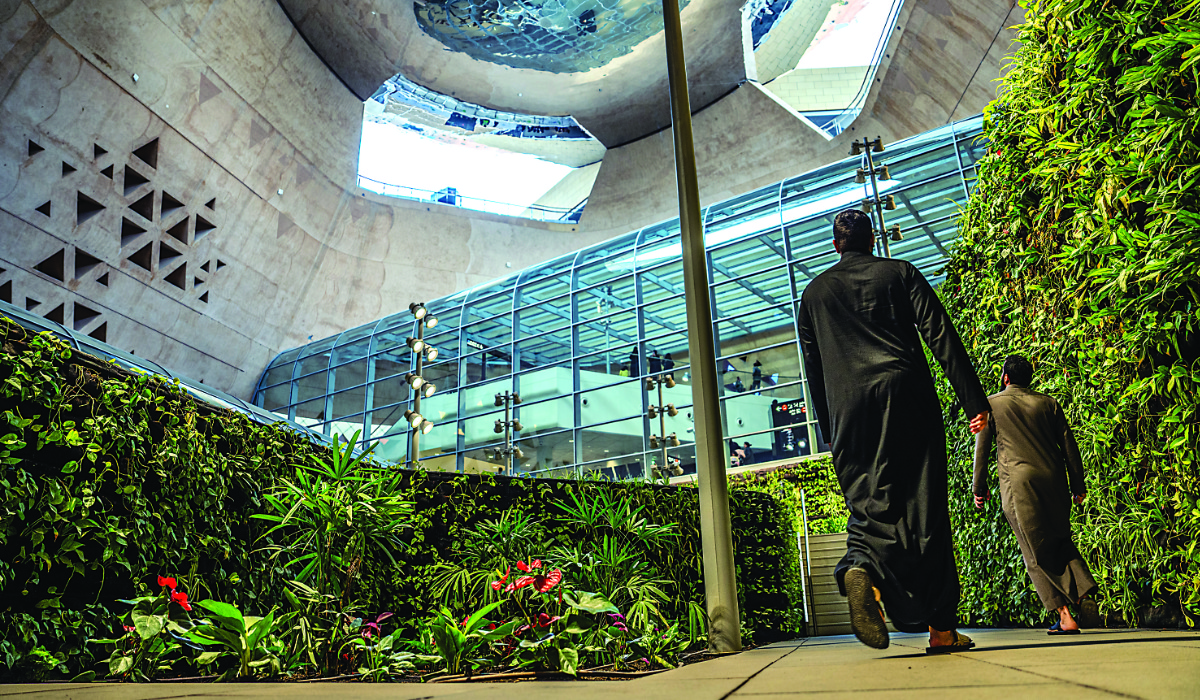DHAHRAN: For three spectacular nights from May 18-20, Jazz at Lincoln Center performed at Ithra for local jazz lovers. For the occasion, the New York-based band dressed in suits, kimonos and traditional Saudi attire performed with Saudi singer Loulwa Al-Sharif.
The performance included 11 perfectly paced jazz songs with a sonic repertoire consisting of classic jazz, Afro-Cuban beats and everything in between. The set list was thoughtful, serving as an audible journey through the history of jazz while also incorporating the culture of the current host country.
In true jazz fashion, it was a night of collaboration and improvisation.

The program included 11 perfectly paced jazz songs that ranged from classic jazz to Afro-Cuban beats. (Supplied)
With the brisk, New York City jazz tempo and the laid-back Sharqiya attitude, the combination was a match made in jazz heaven. Small clusters of seats were situated on each end of the stage to resemble a jazz club setting.
Saudi songstress Al-Sharif brought all audience members to their feet as she entered the stage and was visibly moved by the audience’s fierce applause.
Known for being the first woman to perform publicly in Saudi Arabia, Al-Sharif told the audience she was humbled at the honor of being part of their evening.

The program included 11 perfectly paced jazz songs that ranged from classic jazz to Afro-Cuban beats. (Supplied)
With just a one-hour rehearsal, the band and Al-Sharif were able to capture the essence of the jazz era and customize it to the Dhahran setting, a testament to how music brings cultures together.
With lead vocals by the prodigious trumpet talent Benny Benack III and Tahira Clayton, the duo sang their hearts out to beats by bassist Mark Lewandowski. The music was complete with Charles Goold on drums, Jocelyn Gould on guitar, and Miki Yamanaka on piano.
“I encourage all you guys — you should have your fingers snapping, your toes tapping. I’m not going to tell you to get up in the aisles and dance but I’m not going to stop you,” Benack told the audience at one point.

The program included 11 perfectly paced jazz songs that ranged from classic jazz to Afro-Cuban beats. (Supplied)
With dizzying vocal charms and impressive talents, an enthusiastic audience and a dynamic band on stage, the musical geniuses of jazz greats such as Ella Fitzgerald, Bing Crosby, Duke Ellington and others were presented. The set included Ellington’s “In a Mellow Tone” and favorites such as Fitzgerald’s “Cheek to Cheek” and “They Can’t Take That Away From Me.”
Earlier that day, the seats were filled with students from a couple of local schools. Benack shared his experience meeting them: “For some of them, it was their first live music performance ever; it was the first time they’d seen some of these instruments.
“So, I explained to them what swing is. And I said to those students the same thing I’ll say to you guys: Swing is the groove that makes you move.”

The program included 11 perfectly paced jazz songs that ranged from classic jazz to Afro-Cuban beats. (Supplied)
The hour-long event was a true medley of East and West. The ever-popular “What a Wonderful World” seemed to get everyone singing along. The set concluded with a standing ovation that lasted several minutes.
On the first two nights, the show ended with a Q&A session with Ninyaz Aziza, a presenter for Energy Radio.
“I have to say the thing that I’m maybe most really excited about — that I didn’t realize until we came out and played for you because this is our first audience in Saudi — was just how wonderful the audience would be. That is something that I will carry back to New York City.
“If anybody asks, I’m going to say you got to go out to Saudi Arabia. Because they know how to have a good time,” Benack told the crowd to hot applause.



































